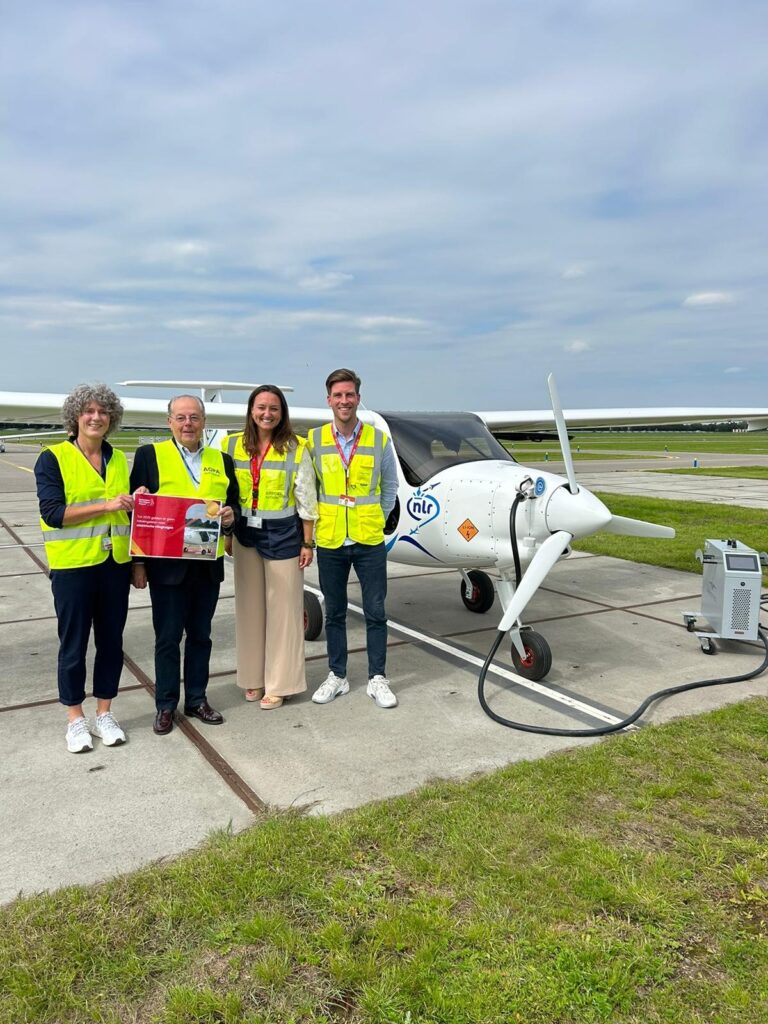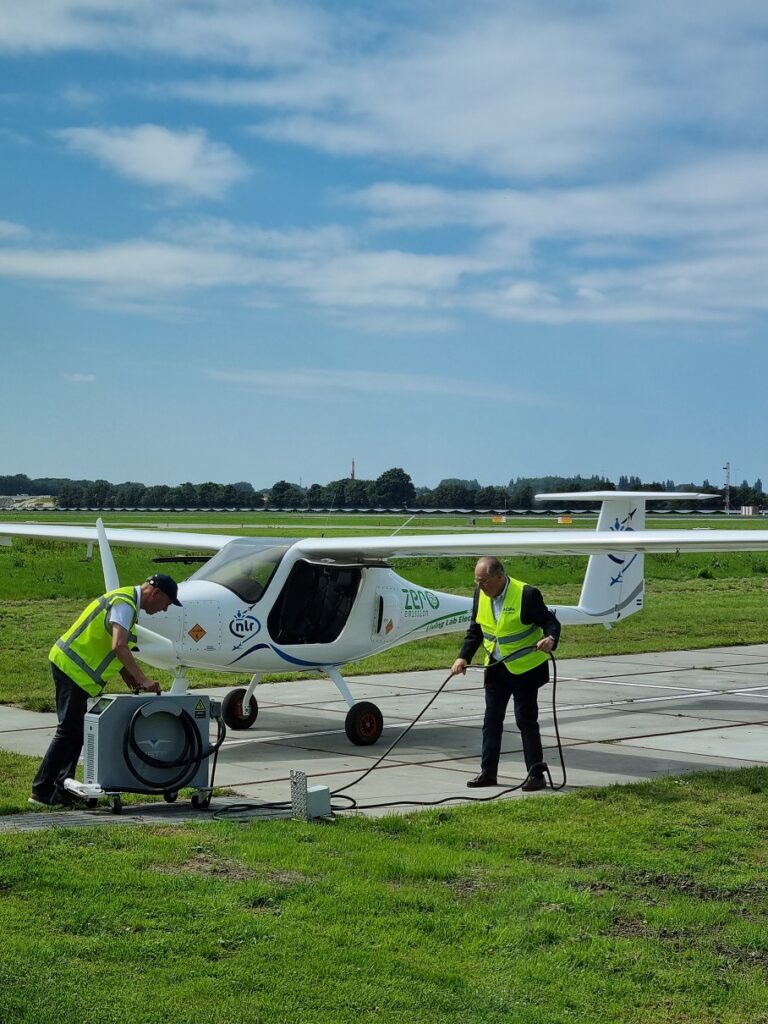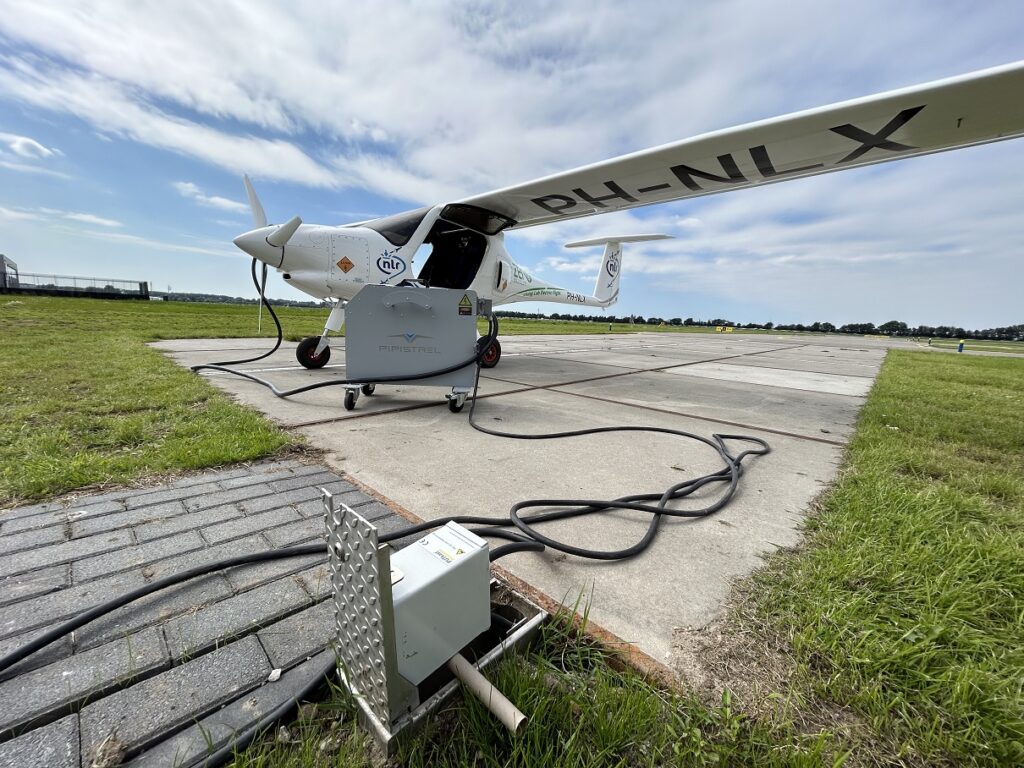August 2023
A new charging infrastructure for electric aircraft was officially put into operation at Rotterdam The Hague Airport (RTHA) on 10 August. The reason for the construction was the Netherlands Aerospace Centre (NLR) lending its Pipistrel Velis Electro to the Rotterdam Aero Club for electric (training) flights. The aim is to promote electric flying and to increase knowledge in this area. The new charging infrastructure needed for the Pipistrel was co-funded by the European Union as part of the TULIPS programme. A TULIPS demonstration is planned for next year.


First step towards TULIPS demonstration with unattended charging
The commissioning of the charging infrastructure is a first step towards a TULIPS demonstration with unattended charging that is planned for next spring. Because electric flying is new, currently a person must always physically supervise the charging process for safety reasons. That’s inconvenient, because charging may take a few hours. The TULIPS programme wants to show how you can safely monitor the charging with the help of smart software, data sharing and camera images.
Valuable experiences for all European airports
Tests like these are important, because electric flying is one of the ways in which we can make aviation more sustainable, especially when it comes to general aviation. But because electric flying is new and aviation has strict safety procedures, all kinds of mitigating measures are necessary. The TULIPS demo, the findings of RTHA, the experience that the pilots of RAC will gain and the data that NLR collects with the Pipistrel are therefore very useful to determine what is needed to make electric flying part of the regular operation, whether it concerns the infrastructure, the operation or fire safety. This information will not only be valuable for the airport of Rotterdam, but for all European airports.

Press release Electric (training) flights at Rotterdam The Hague Airport (in Dutch)
